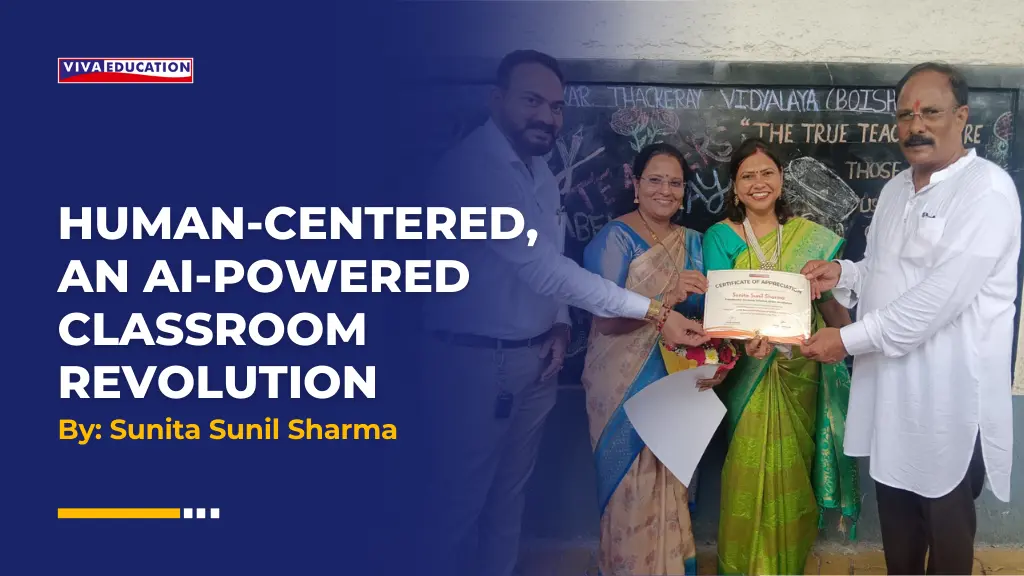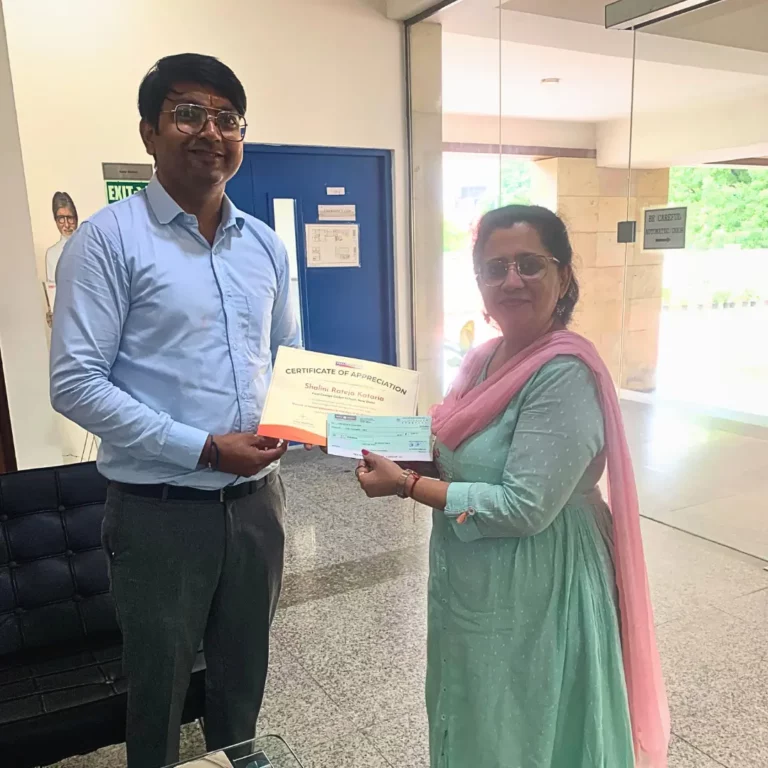Human-Centered, An AI-Powered Classroom Revolution
- Schools
- September 6, 2024
- Sunita Sunil Sharma

The classroom, that sacred space where information is deposited into the open brains of students has been teed up for a revolution. AI is not just a futuristic idea of science fiction in the making; it’s right around the corner and threatens to take over our notions of education as well. While that potential, and the excitement behind it are real there needs to be caution. In this article, we mix tales of thankfulness for and about the use-case scenarios that present themselves with AI in education as well as stories of caution around things to watch out for – helping us chart a way into a future which leverages its power while keeping what is most quintessential: Being Human.
Promises Unleashed: AI – The Personalized Learning Powerhouse
Personalized Learning Experiences The most significant contribution of AI is its personalized learning experience. The era of one-size-fits-all is over. In another reality here, AI tutors crunch student data to locate strengths and weaknesses. With this, the AI can determine individual learning paths and suggest personalized resources, activities and adaptive testing. This means students are also encouraged to help develop and grow academically, something that facilitates in building the roots of a lifelong learner.
Moreover, AI can give instant feedback from what it learned over time: an inexhaustible and wise online tutor. Picture assignment corrections, which students can have immediately instead of in a couple days. They help in the analysis of writing styles, detecting grammar errors and offering betterment suggestions. And, just like math or science, in such areas AI tutors may correct calculations (or experiments) directly to provide real-time feedback and a clearer understanding for students.
The advantages go well beyond the individual student. Whereas AI can offer educators the capacity to analyze student data on a class-by-class level. To do so, teacher might track their common learning roadblocks and come up with a strategy- how to teach the concept keeping those obstacles in mind. A world where teachers are not entire lesson plans reteaching topics that 15% of students failed to master. In turn, AI can flag these students so that the teacher only needs to focus on specific areas in which they could use more direction.
Perils to Address: Navigating Bias and Ensuring Equity
But right along with the promises come some hurdles that have to be taken seriously. However, AI algorithms are only as good their training data. But bias, whether by design or not in algorithms poses the risk of depriving learning opportunities for some groups. When AI now does the same and is training on datasets that contains hidden links between certain genders and specific subject matter, we risk for all of us – men & women not to be able to move forward as individuals or a race.
A third major issue is equitable access. AI educational materials need to be accessible by all students but especially those of lower socio- economic status. Our schools must similarly be able to deliver AI equitably and we cannot have a world where technology merely creates new digital divides.
The AI-Human Synergy: Charting a Path Forward
How then do we call upon AI in a way that will not rob the innate human quality of education?
1) Teachers Must Remain at the Heart of Learning AI be an instrument, not a substitute of teacher’s experience and understanding the hearts of students with compassion. The very specific tasks should and will be replaced by AI, yet teachers take and guide students through the genuinely enriching experiences their human judgement can provide- as well to motivate emotionally what Ai cannot (;).
Collaboration is key. We need to create new infrastructure that encourages us into a future where humans can co-design learning AI tools, and we are not all forced through the same simplistic eye of a needle. Equally important is the focus on digital literacy. It is essential to give students a perspective of what AI can and cannot do, along with the ability to spot potential bias so they are better prepared for how learning tool underpinned by AI will work.
Lastly, encourage responsible AI development through transparency and ethical considerations. We need to be careful that AI is working fairly, for all students and in a manner benefitting the learners. But – the classroom of tomorrow will not be a singularity; it is an ecosystem that combines man and AI. Picture a world in which teachers can do what they were meant to – teach children and ignite their love of learning -while AI handles the more pedestrian tasks related to evaluation and personalized learning plans. This human-centered approach will guarantee that education is transformed for the better, no student left behind, slogging through this brave new world of AI powered learning.
This blog is the winning entry in our BLOG CONTEST for Educators on the topic: “The Future of School Education in the Age of Artificial Intelligence.
Submitted by: Sunita Sunil Sharma, Prabodhankar Thackeray Vidyalaya, Boisar
Please note: The views and ideas expressed in this blog are those of the author and do not necessarily reflect the views of our organization.

